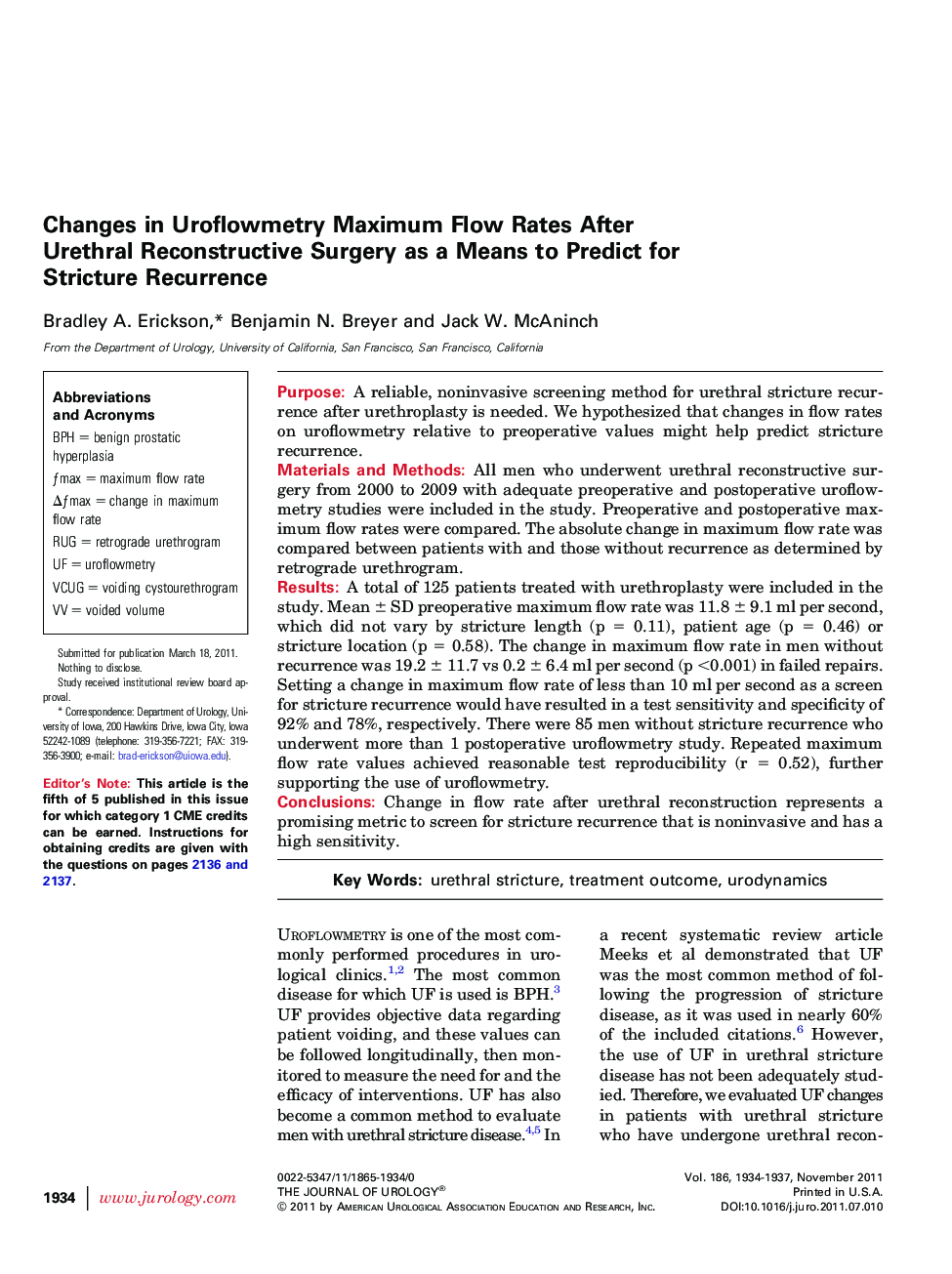| Article ID | Journal | Published Year | Pages | File Type |
|---|---|---|---|---|
| 3864462 | The Journal of Urology | 2011 | 4 Pages |
PurposeA reliable, noninvasive screening method for urethral stricture recurrence after urethroplasty is needed. We hypothesized that changes in flow rates on uroflowmetry relative to preoperative values might help predict stricture recurrence.Materials and MethodsAll men who underwent urethral reconstructive surgery from 2000 to 2009 with adequate preoperative and postoperative uroflowmetry studies were included in the study. Preoperative and postoperative maximum flow rates were compared. The absolute change in maximum flow rate was compared between patients with and those without recurrence as determined by retrograde urethrogram.ResultsA total of 125 patients treated with urethroplasty were included in the study. Mean ± SD preoperative maximum flow rate was 11.8 ± 9.1 ml per second, which did not vary by stricture length (p = 0.11), patient age (p = 0.46) or stricture location (p = 0.58). The change in maximum flow rate in men without recurrence was 19.2 ± 11.7 vs 0.2 ± 6.4 ml per second (p <0.001) in failed repairs. Setting a change in maximum flow rate of less than 10 ml per second as a screen for stricture recurrence would have resulted in a test sensitivity and specificity of 92% and 78%, respectively. There were 85 men without stricture recurrence who underwent more than 1 postoperative uroflowmetry study. Repeated maximum flow rate values achieved reasonable test reproducibility (r = 0.52), further supporting the use of uroflowmetry.ConclusionsChange in flow rate after urethral reconstruction represents a promising metric to screen for stricture recurrence that is noninvasive and has a high sensitivity.
